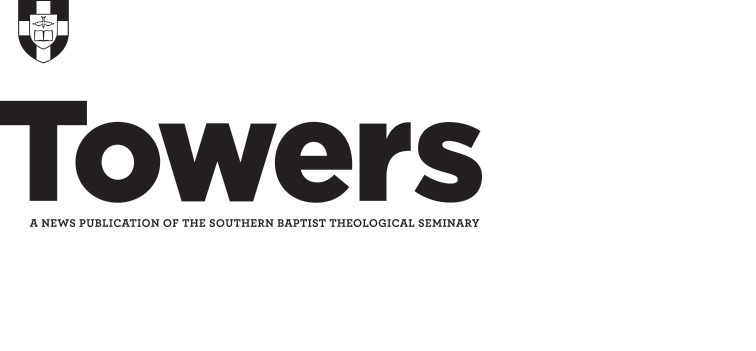Having joined the Southern Seminary faculty in 1887 as assistant professor of Hebrew, Greek, and homiletics, John R. Sampey served the institution until his death in 1946, a few weeks shy of his 83rd birthday. His long tenure at SBTS also entailed nearly 13 years as the seminary’s fifth president, during which time he became instrumental in raising the seminary out of crippling debt incurred during the move to the current campus on Lexington Road. In addition to his academic and administrative gifts, Sampey was well known as a vigorous evangelist with a heart for the nations.
Southern Baptists sent their first denominationally-sponsored missionary to Brazil in 1859, but he suffered poor health and the next missionary company did not enter the country until 1881. Over time, SBC missionaries planted multiple churches in large cities such as Rio de Janeiro. In Brazil, Baptist missionaries contended against the ingrained influence of Roman Catholicism, but the 1889 revolution which deposed Emperor Dom Pedro II broke the Catholic stranglehold over the region, reorganized the government into a republic, and created an opportunity for Protestant missionaries to legally enter the country.1
Sampey’s daughter Elsie married Ambrose Camp Duggar in 1920, and the couple became Southern Baptist missionaries to Brazil in the summer of 1923. During the 1920s, Sampey took three summer vacations to visit his daughter’s family, as well as various former students serving in the South American mission fields. He departed on his first trip to Brazil in May 1925, a few months after the death of his first wife. Before departure by ship, E.Y. Mullins told him: “Remember, Sampey, that I wished to go as a missionary to Brazil; you must preach some for me, too.”2 Sampey’s foreign tour lasted over three months, and he received invitations to hold evangelistic meetings as soon as he arrived in Rio. Sampey preached multiple times nearly every day with the aid of Portuguese interpreters.
During his last week in Brazil, Sampey preached to an audience of young students at the Collegio Baptista in Rio. Many of these college students came from Catholic families and feared the personal repercussions of avowing evangelical faith in Christ. As Sampey described the event:
God heard our prayers and broke down all barriers, so that young people from Catholic as well as atheistic homes listened to the gospel message sympathetically. On the last morning when the invitation to confess Christ publicly was given, they began to come forward two and three at a time to give me their hands. I now knew enough to welcome them in Portuguese, and they kept coming forward until well over a hundred had avowed their faith in the Saviour.3
He married Ellen Wood in 1926 and combined his honeymoon with another missionary tour of Brazil, reuniting with converts made during the previous year’s visit. In the course of their travels, Sampey said to his wife: “You must come second. … The Lord Jesus must come first, and you and I can come next. Jesus must reign in our hearts without a rival.”4
Sampey estimated that his three vacations to Brazil between 1925 and 1928 resulted in about 1,700 professions of faith in Christ.5 When academic classes resumed at the seminary for each fall term, Sampey shared his experiences during monthly Missionary Days on campus, inspiring future missionaries to consider a calling to foreign mission work.
After Sampey’s election to the seminary presidency in 1929, his opportunities for summer evangelistic tours became fleeting, due primarily to the effects of the Great Depression on both the seminary’s endowment and his personal life savings. Though Sampey’s heart remained fixated on ministering alongside the South American churches, his duties to the seminary required his full attention in efforts of administration and fundraising.6 In the fall of 1936, he and Ellen were finally able to make a missionary tour of China.
Reflecting back upon his foreign mission endeavors in his Memoirs, an octogenarian Sampey gave all credit to the Holy Spirit’s power in his preaching:
From 1921 to 1943, a passion for winning the unsaved to faith in the Lord Jesus burned almost constantly in my soul … The Spirit of God always gave me an answer for every soul that came seeking light. Sometimes the Holy Spirit fell with such mighty power upon an audience that I was thrilled with the converting power of the Lord.7
Learn more about the life of John R. Sampey in the Archives and Special Collections of the James P. Boyce Centennial Library.
1John R. Sampey, Brazil (Baltimore: Maryland Baptist Mission Rooms), 5-11.
2Sampey, Memoirs of John R. Sampey (Nashville: Broadman Press, 1947), 187.
3Ibid., 191.
4Ibid., 284.
5Ibid., 198-204.
6Sampey, “A Difficult Situation,” [undated manuscript] Missionary Letters, 1929-1931, John R. Sampey Papers, Archives and Special Collections, James P. Boyce Centennial Library, The Southern Baptist Theological Seminary, Louisville, Kentucky.
7Memoirs of John R. Sampey, 283.



